Google Cloud Platform (GCP) is a comprehensive suite of cloud computing services that provides businesses and developers with a wide range of tools and resources to build, deploy, and scale applications. One of the key GCP components is its Application Programming Interfaces (APIs), which play a crucial role in enabling seamless communication and interaction with Google Cloud services. In this article, we will discuss Google Cloud APIs, their purpose, and use cases
What are APIs?
Before we delve into the specifics of Google Cloud APIs, let’s briefly review what APIs are. An API, or Application Programming Interface, serves as a bridge that allows different software applications to communicate with each other. It defines a set of rules and protocols for requesting and exchanging data and functionality between applications. APIs are fundamental in enabling integration, automation, and extending the capabilities of software systems.
About Google Cloud APIs:
Google Cloud offers a wide array of APIs across its diverse set of services, each designed to serve a unique purpose. These APIs empower developers to tap into Google’s powerful infrastructure and services, enhancing the functionality of their applications. Lets explore the benefits of Google Cloud APIs.
Benefits of using the Google Cloud API:
Google Cloud APIs offer a myriad of benefits that empower developers and organizations to scale, analyze, and optimize their operations with unparalleled ease and flexibility. Here are a few benefits of using the Google Cloud API for business.
- Access to Cloud Services: Google Cloud APIs provide access to various cloud services such as Google Cloud Storage, Cloud Vision, and BigQuery. Developers can use these APIs to manage and utilize these services directly from their applications.
- Data Processing and Analytics: APIs like BigQuery allow you to analyze large datasets in real-time, enabling you to gain valuable insights from your data without the need for complex infrastructure.
- Machine Learning and AI: Google’s AI and machine learning APIs, including Google Cloud AI and AutoML, facilitate tasks like image and speech recognition, translation, and natural language understanding, making it easier to integrate AI capabilities into your applications.
- Maps and Geolocation: The Google Maps API offers geolocation, mapping, and routing functionalities, making it an essential tool for applications that require location-based services.
- Identity and Security: APIs like Identity and Access Management (IAM) and Cloud Identity Platform help manage user identities and secure access to resources within your applications.
- IoT Integration: Google Cloud IoT Core and Pub/Sub APIs enable you to connect, manage, and analyze data from Internet of Things (IoT) devices at scale.
- Development and Deployment: APIs like Cloud Build and Cloud Deployment Manager automate the development, testing, and deployment of applications, streamlining the DevOps process.
- Scalability and Storage: APIs for services like Google Cloud Storage and Kubernetes Engine allow you to store and manage your application’s data and resources in a scalable and efficient manner.
List of Google Cloud APIs with their purposes and Use cases:
| Name |
Purpose |
Use Cases |
| Cloud Vision API |
Provides image analysis capabilities, including object recognition, text extraction, and content moderation. |
Image classification, optical character recognition (OCR), content moderation in user-generated content. |
| Cloud Natural Language API: |
Analyzes text for sentiment analysis, entity recognition, and syntax analysis. |
Sentiment analysis of customer reviews, named entity recognition in text, language understanding in chatbots. |
| Translation API |
Offers language translation services with support for a wide range of languages. |
Real-time language translation in applications and content localization for global audiences. |
| Speech-to-Text API |
It converts spoken language into written text, supporting various audio formats. |
Voice assistants, transcription services, and voice command recognition |
| Text-to-Speech API |
Synthesizes natural-sounding speech from text input. |
Voice interfaces, accessibility features, and automated voiceovers |
| Cloud Video Intelligence API |
Analyzes and annotates video content, including object tracking, scene detection, and explicit content detection. |
Video content analysis and content moderation for video platforms |
| AutoML Vision |
Allows customization of image classification models without deep machine learning expertise. |
Custom image recognition for specific applications; product identification |
| AutoML Natural Language |
Enables the creation of custom natural language processing models for specific use cases. |
Custom sentiment analysis and specialized text classification |
| Cloud AI Platform |
Provides a platform for building, training, and deploying machine learning models. |
End-to-end machine learning model development and deployment |
| Recommendations AI |
Offers a recommendation engine to deliver personalized product recommendations to users. |
E-commerce product recommendations and content suggestions |
| Document AI |
Extracts structured data from unstructured documents, such as invoices, receipts, and forms. |
Document automation involves data extraction from legal documents. |
| Vertex AI |
A unified AI and machine learning platform for model development, training, and deployment |
Large-scale machine learning projects, model experimentation, and deployment at scale. |
| OS Login API |
Provides authentication and access management for Linux instances using SSH keys and user management. |
Secure access control to VM instances, centralized user management, and SSH key management |
| Apigee Integration |
API-first integration to connect existing data and applications |
Apigee to create API proxies that act as intermediaries between client applications and backend services. |
Final Thoughts:
The Google cloud platform offers an infinite number of APIs. For more details, you can visit the official documentation for Google Cloud products. These Google Cloud APIs provide pre-built, high-quality models and services that can be easily integrated into applications and workflows, allowing developers to add advanced capabilities to their projects without the need for extensive machine-learning expertise.
The post Purpose of Google Cloud API Explained | Google Cloud API library appeared first on .
Tags:
- Cloud Computing
- Google Cloud Platform
- APIS library
- Cloud API
- GCP components
- Google Cloud api
- google cloud platform
- google cloud services
- Google Cloud storage

 .NET MAUI Development
.NET MAUI Development
 Xamarin Application Development
Xamarin Application Development
 React Native App Development
React Native App Development
 iOS Application Development
iOS Application Development
 Android Application Development
Android Application Development
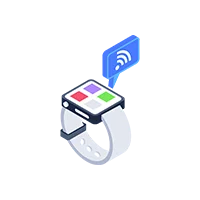 Android Wear App Development
Android Wear App Development
 Ionic Development
Ionic Development
 iBeacon Application Development
iBeacon Application Development
 Universal Windows Platform (UWP)
Universal Windows Platform (UWP)
 Kotlin Application Development
Kotlin Application Development
 Swift Application Development
Swift Application Development
 Flutter Application Development
Flutter Application Development
 PWA Application Development
PWA Application Development
 .NET Application Development
.NET Application Development
 .NET Nuke Development
.NET Nuke Development
 Microsoft Dynamics CRM
Microsoft Dynamics CRM
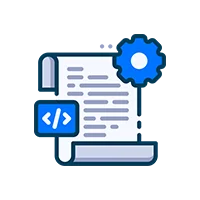 Microsoft Small Business Solution
Microsoft Small Business Solution
 VB .NET Development
VB .NET Development
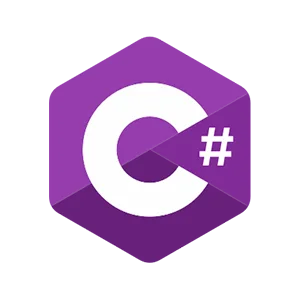 C# Development
C# Development
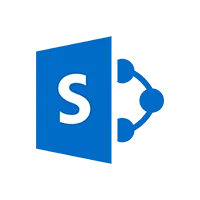 Sharepoint Migration
Sharepoint Migration
 Sharepoint Development
Sharepoint Development
 ASP.NET Core Development
ASP.NET Core Development
 ASP.NET Development
ASP.NET Development
 ASP.NET MVC Development
ASP.NET MVC Development
 Kentico CMS
Kentico CMS
 Umbraco CMS
Umbraco CMS
 AJAX Development
AJAX Development
 Agile Development
Agile Development
 Microsoft Bot
Microsoft Bot
 Microsoft Blazor
Microsoft Blazor
 Microsoft Azure Cognitive
Microsoft Azure Cognitive

 Mean Stack Development
Mean Stack Development
 Vue JS Development
Vue JS Development
 Javascript Development
Javascript Development
 Angular JS Development
Angular JS Development
 Next JS development
Next JS development
 Java Development
Java Development
 Python Development
Python Development
 Django Development
Django Development
 Cherrypy Development
Cherrypy Development
 NodeJS Development
NodeJS Development
 Laravel Development
Laravel Development
 CodeIgniter Development
CodeIgniter Development
 Zend Development
Zend Development
 Ruby on Rails Development
Ruby on Rails Development
 CakePHP Development
CakePHP Development
 PHP Website Development
PHP Website Development
 Symfony Development
Symfony Development
 Drupal Development
Drupal Development
 Joomla Development
Joomla Development
 Wordpress Development
Wordpress Development
 Offshore Software Development
Offshore Software Development
 Custom Application Development
Custom Application Development
 Full Stack Development
Full Stack Development
 AI & Machine Learning
AI & Machine Learning
 Custom CRM Solutions
Custom CRM Solutions
 Flask Software Development
Flask Software Development
 Electron JS Development
Electron JS Development
 ChatGPT Development
ChatGPT Development
 Magento Development
Magento Development
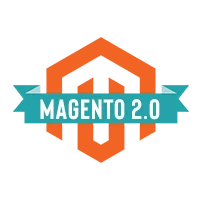 Magento 2.0 Development
Magento 2.0 Development
 Magento Enterprise
Magento Enterprise
 Shopping Cart Development
Shopping Cart Development
 Prestashop Development
Prestashop Development
 Shopify Development
Shopify Development
 Open Cart Development
Open Cart Development
 WooCommerce Development
WooCommerce Development
 BigCommerce Development
BigCommerce Development
 NopCommerce Development
NopCommerce Development
 Virto Commerce Development
Virto Commerce Development
 AspDotNetStorefront Development
AspDotNetStorefront Development
 RaspBerry Pi
RaspBerry Pi
 Firmware Software Development
Firmware Software Development
 ESP 32 Software Development
ESP 32 Software Development
 Embedded Development
Embedded Development
 Internet of Things
Internet of Things
 Nordic Development
Nordic Development
 HTML 5
HTML 5
 UI/UX Design
UI/UX Design
 Graphic Design
Graphic Design
 Adobe Photoshop
Adobe Photoshop
 XML Application Development
XML Application Development
 Cloud Computing Solutions
Cloud Computing Solutions
 Azure Cloud App Development
Azure Cloud App Development
 AWS Development
AWS Development
 Google Cloud Development
Google Cloud Development
 SQL Programming Development
SQL Programming Development
 MySQL Development
MySQL Development
 MongoDB Development
MongoDB Development
 Big Data
Big Data
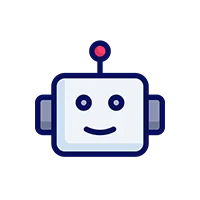 Robotic Process Automation
Robotic Process Automation
 Social Media Marketing
Social Media Marketing
 Search Engine Optimization
Search Engine Optimization
 QA Testing
QA Testing
 Software Testing
Software Testing
 Software Security
Software Security
 Maintenance And Support
Maintenance And Support
 I.T. Consulting Services
I.T. Consulting Services
 Business Intelligence
Business Intelligence
 YII Development
YII Development
 Data Analysis
Data Analysis
 Alexa Skills Development
Alexa Skills Development
 On Demand App for Mobile repairing services
On Demand App for Mobile repairing services
 On Demand App for Car Service Booking
On Demand App for Car Service Booking
 On Demand App for Cleaning Services
On Demand App for Cleaning Services
 On Demand App for Pharmacy
On Demand App for Pharmacy
 On Demand Dedicated Developers
On Demand Dedicated Developers




Leave a Reply